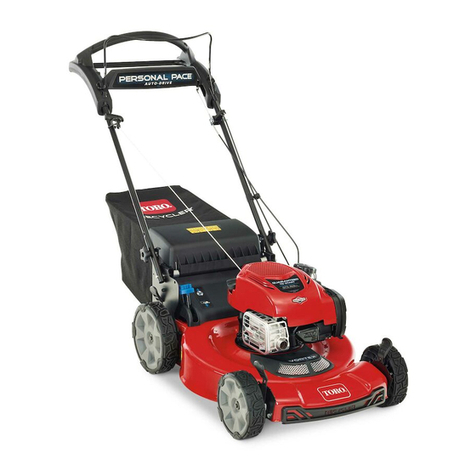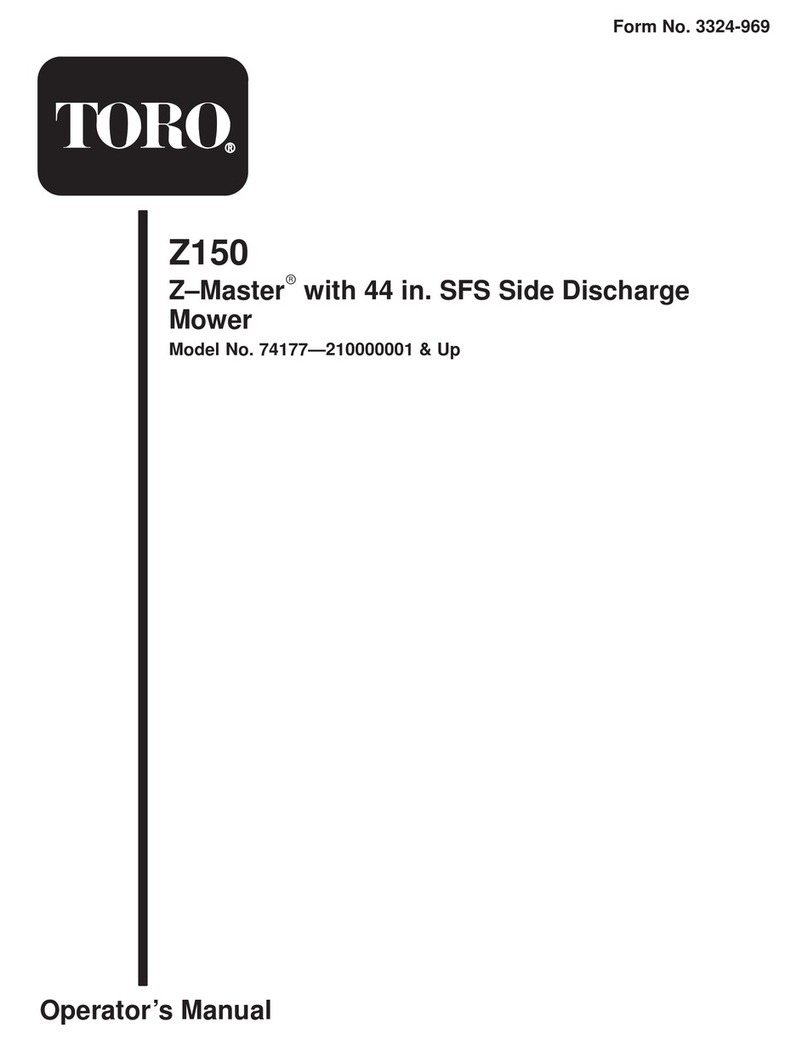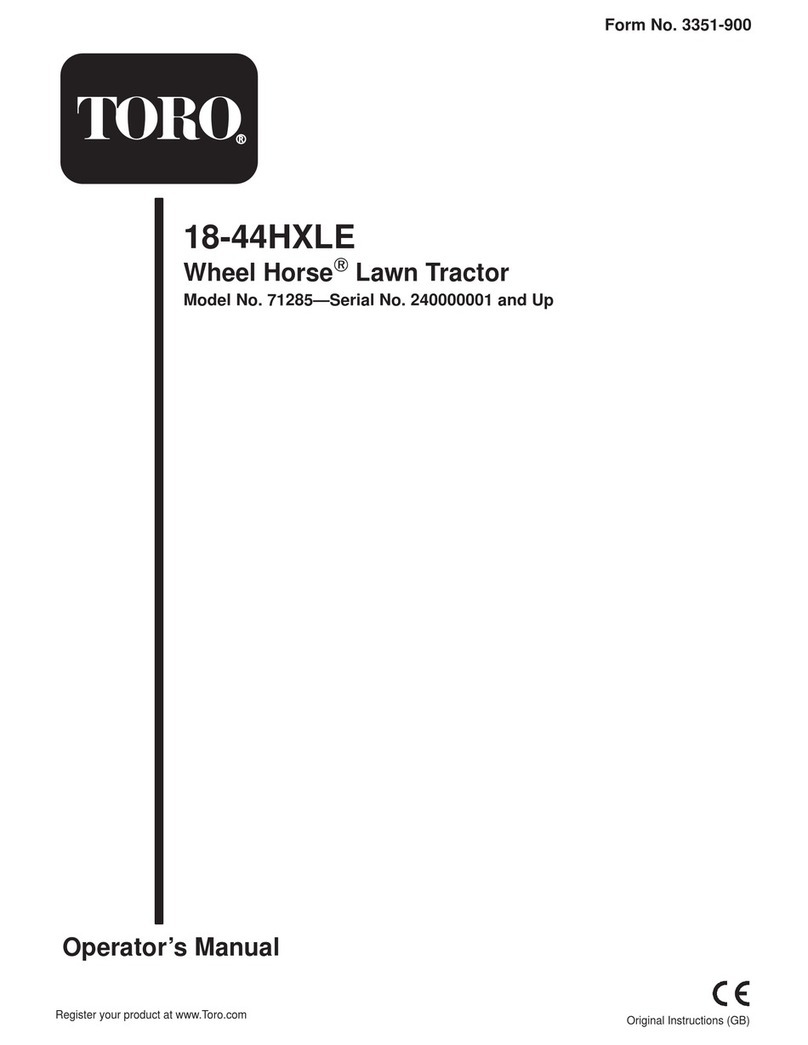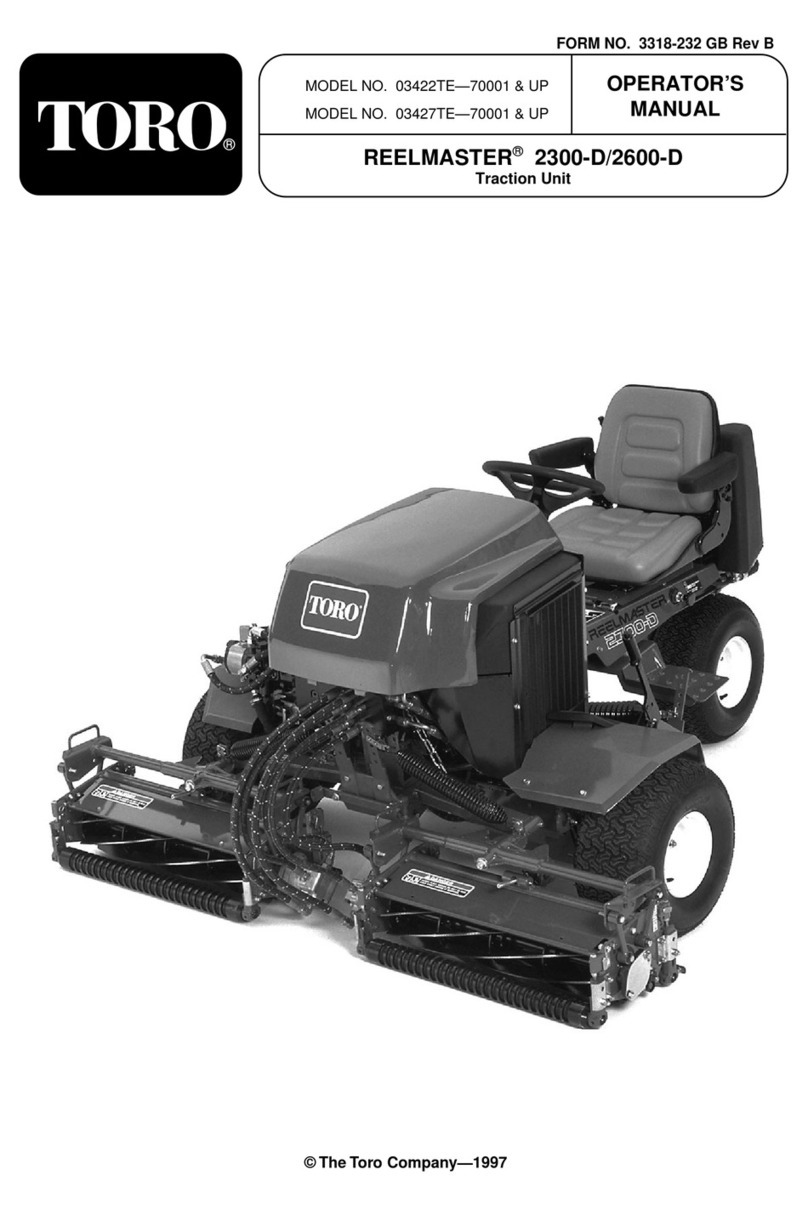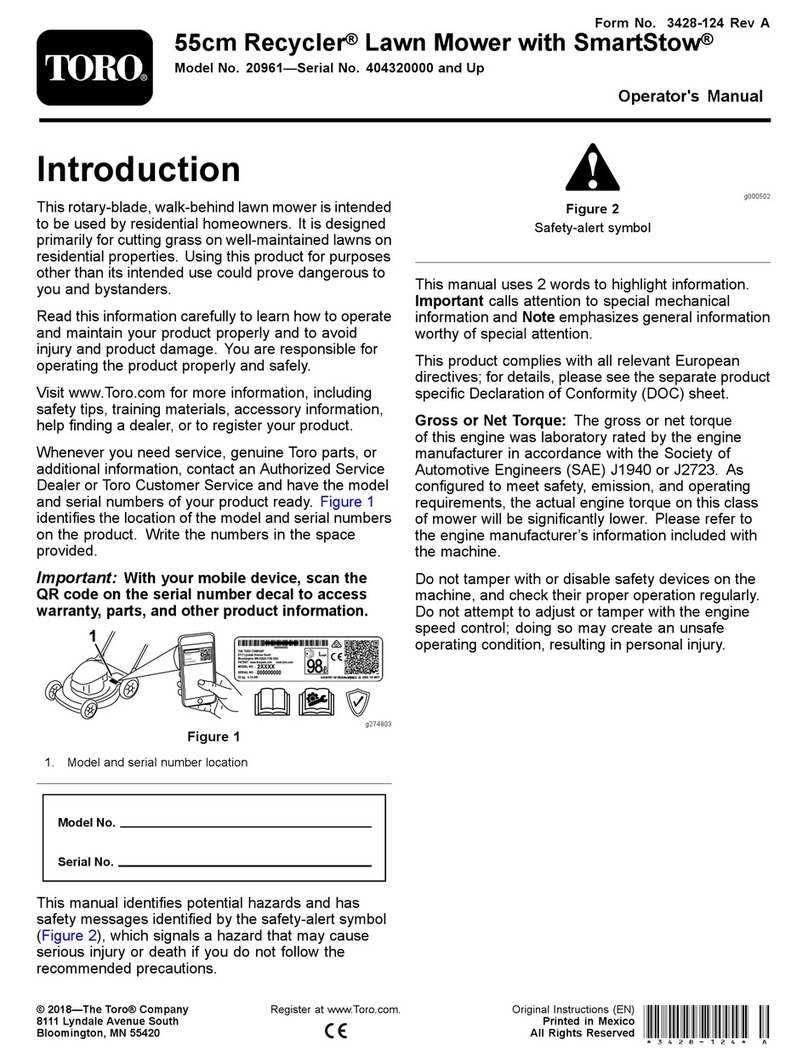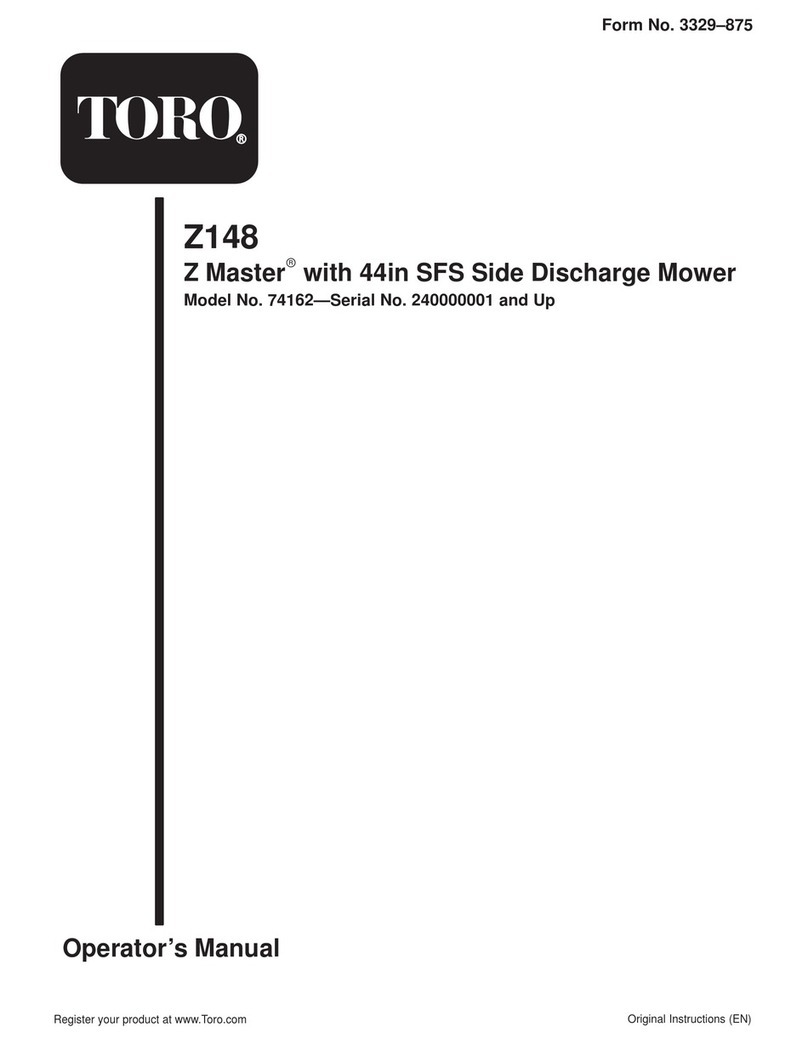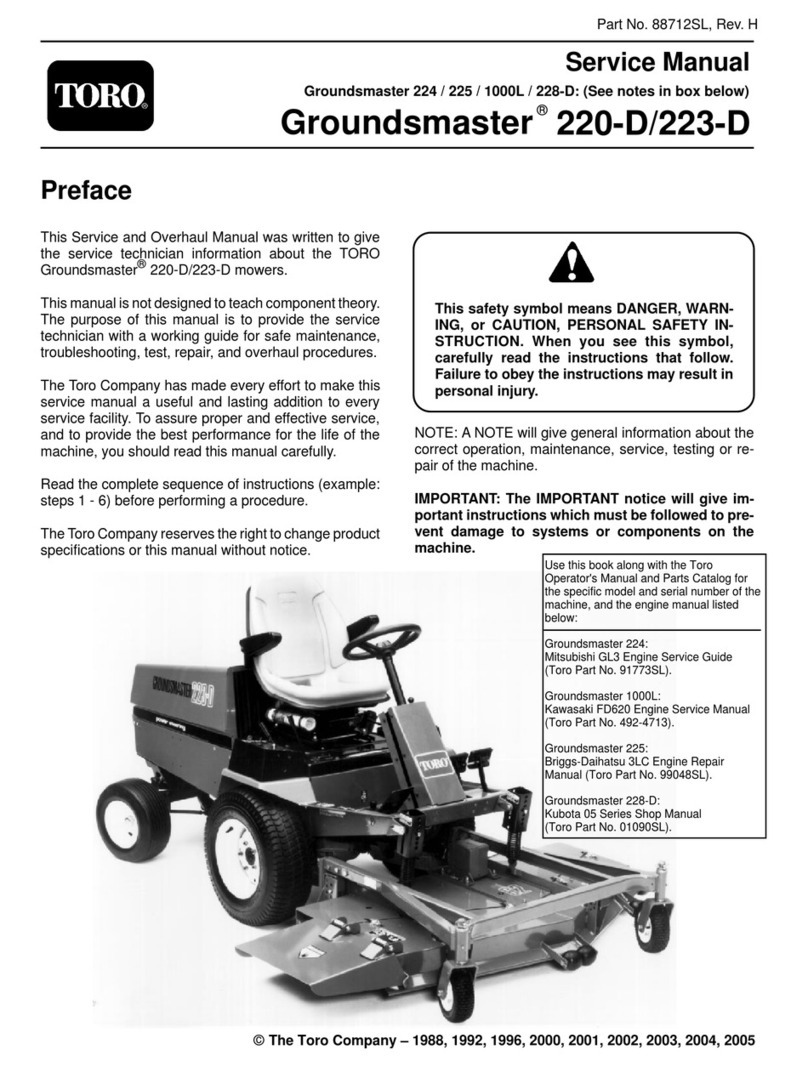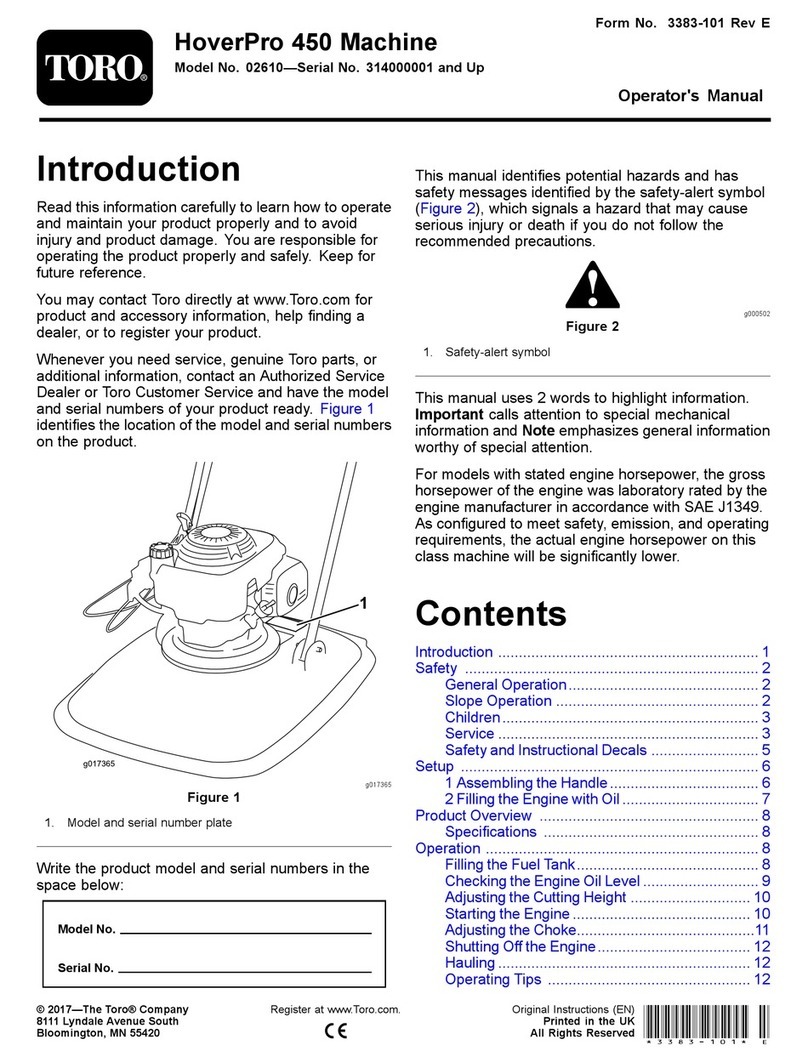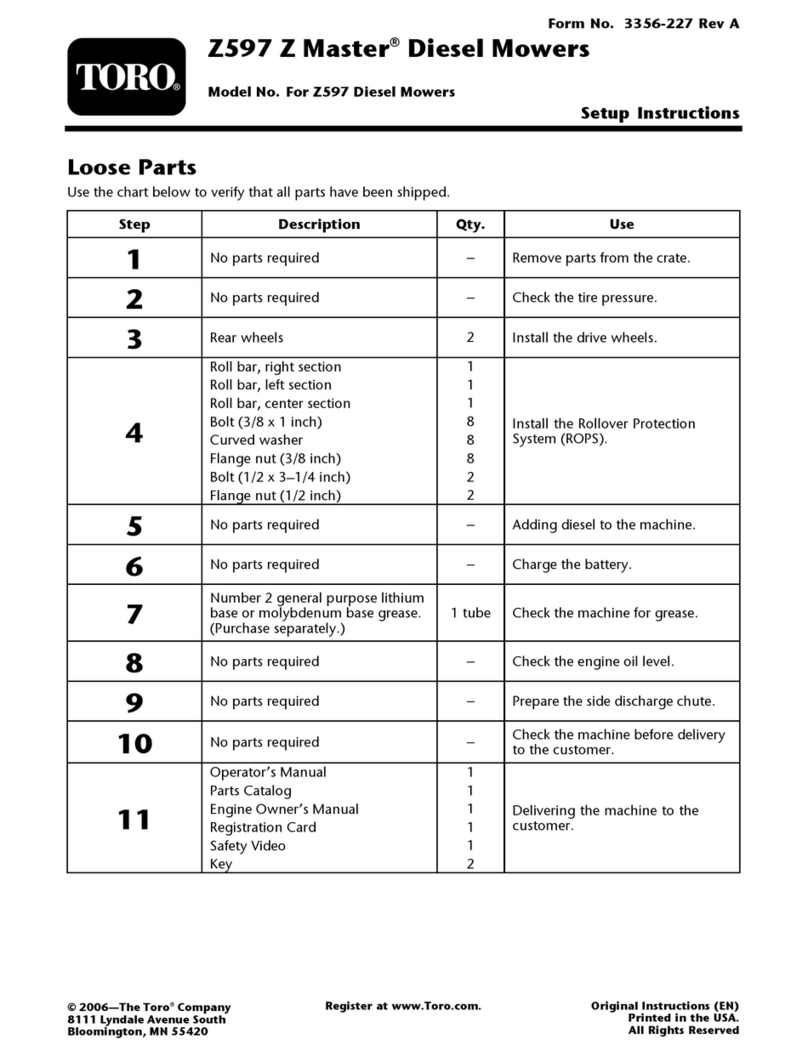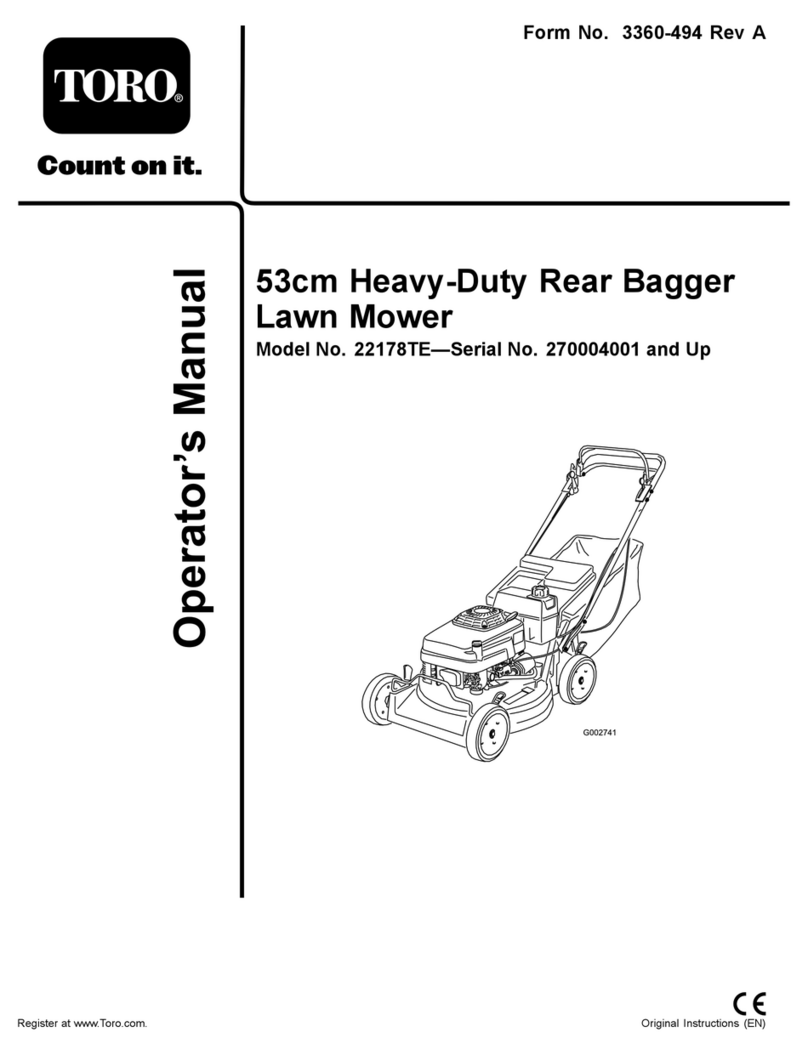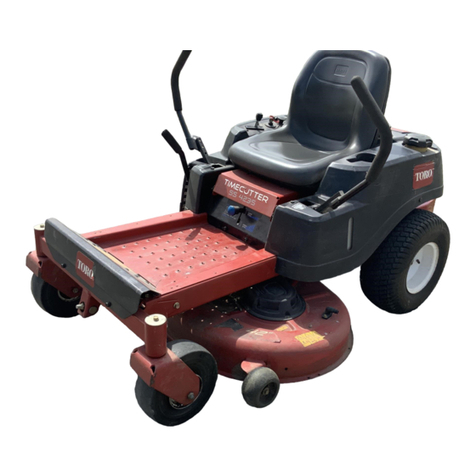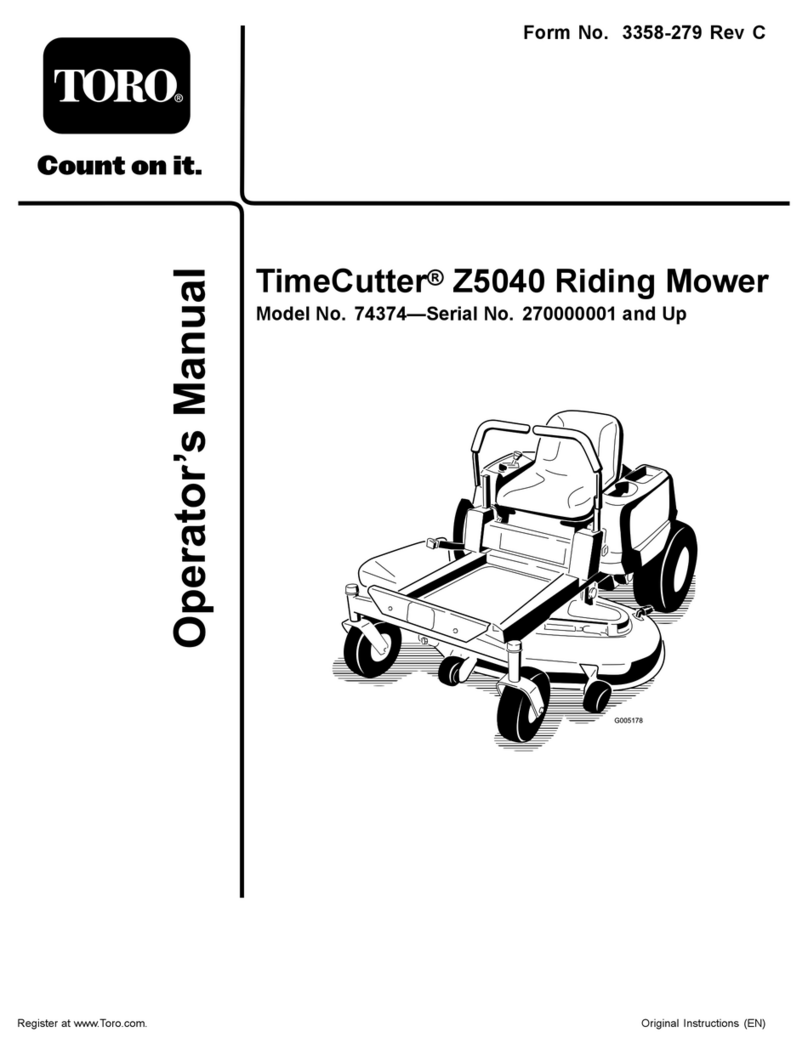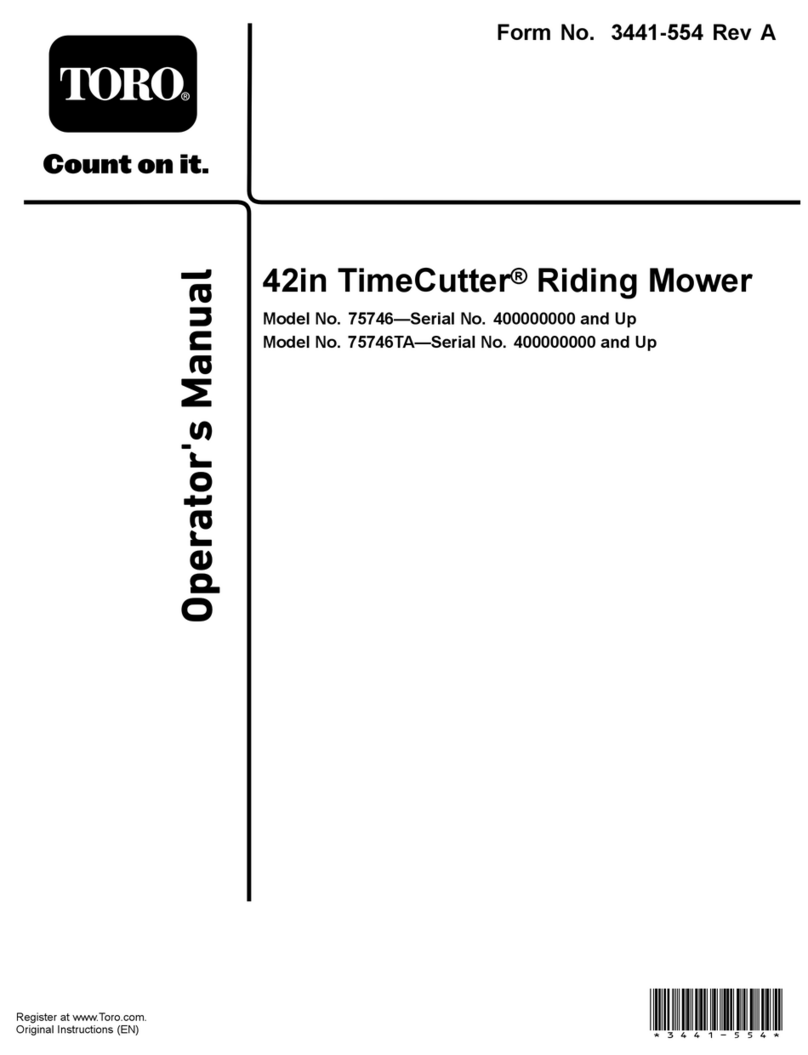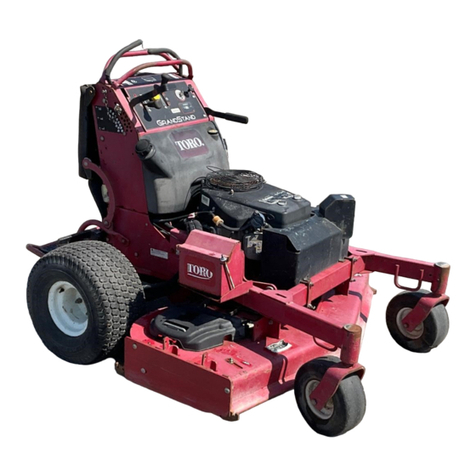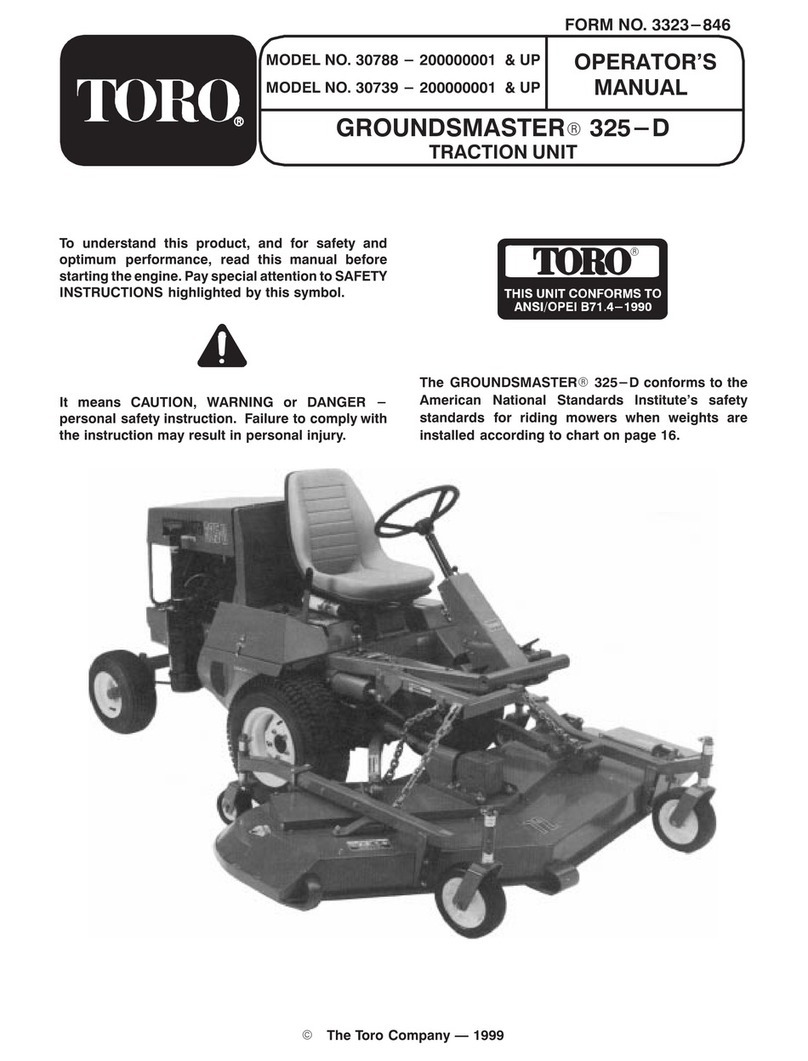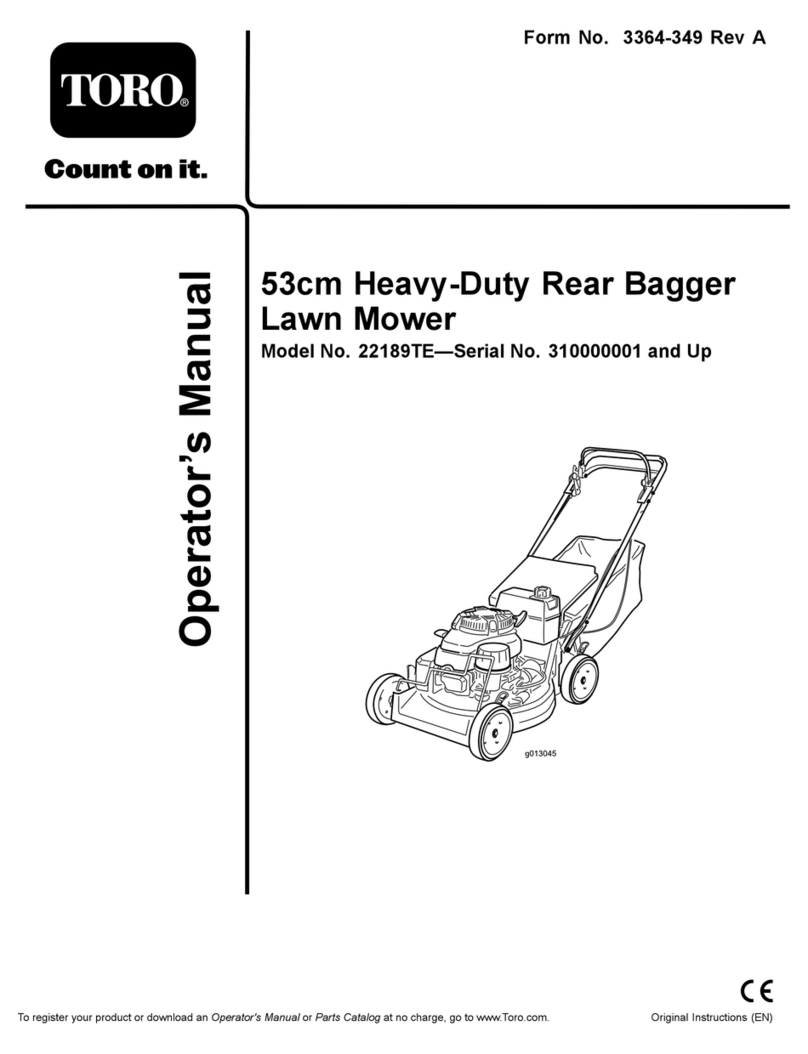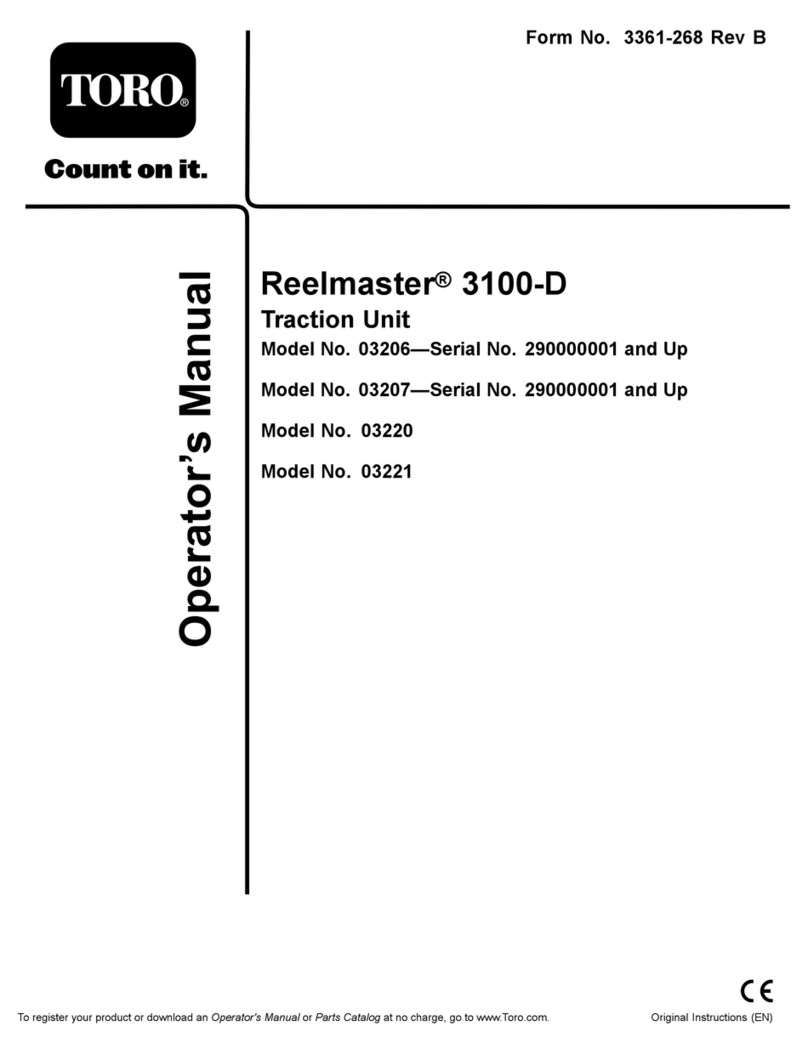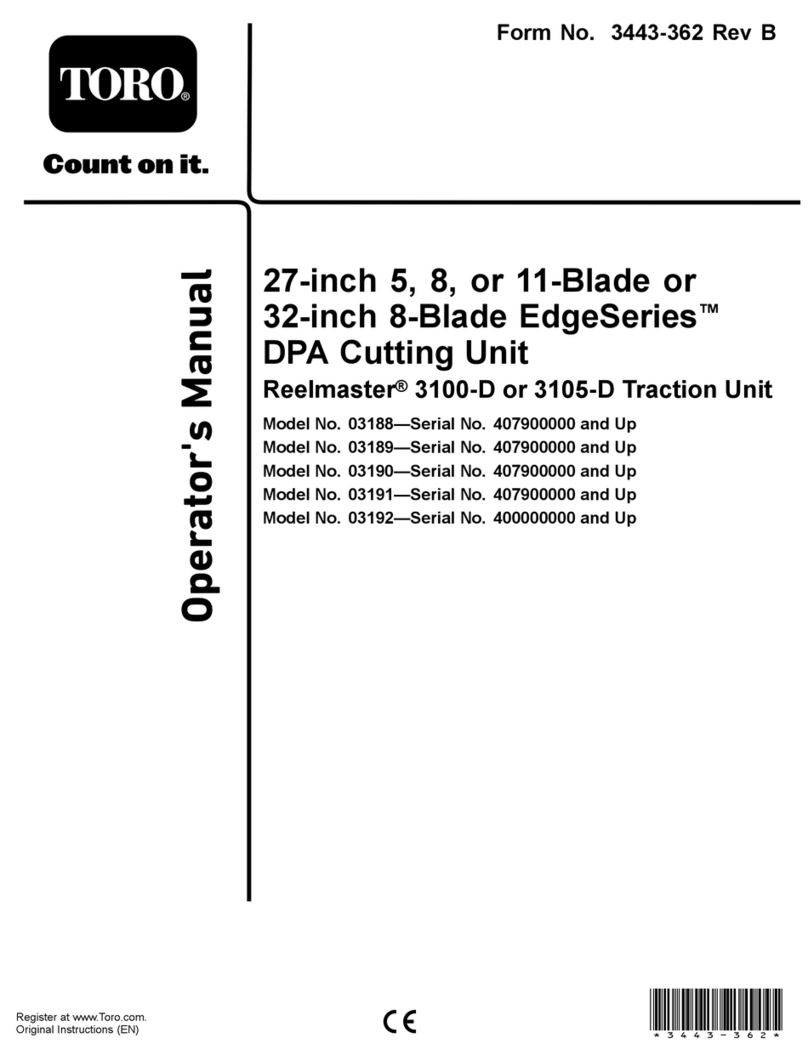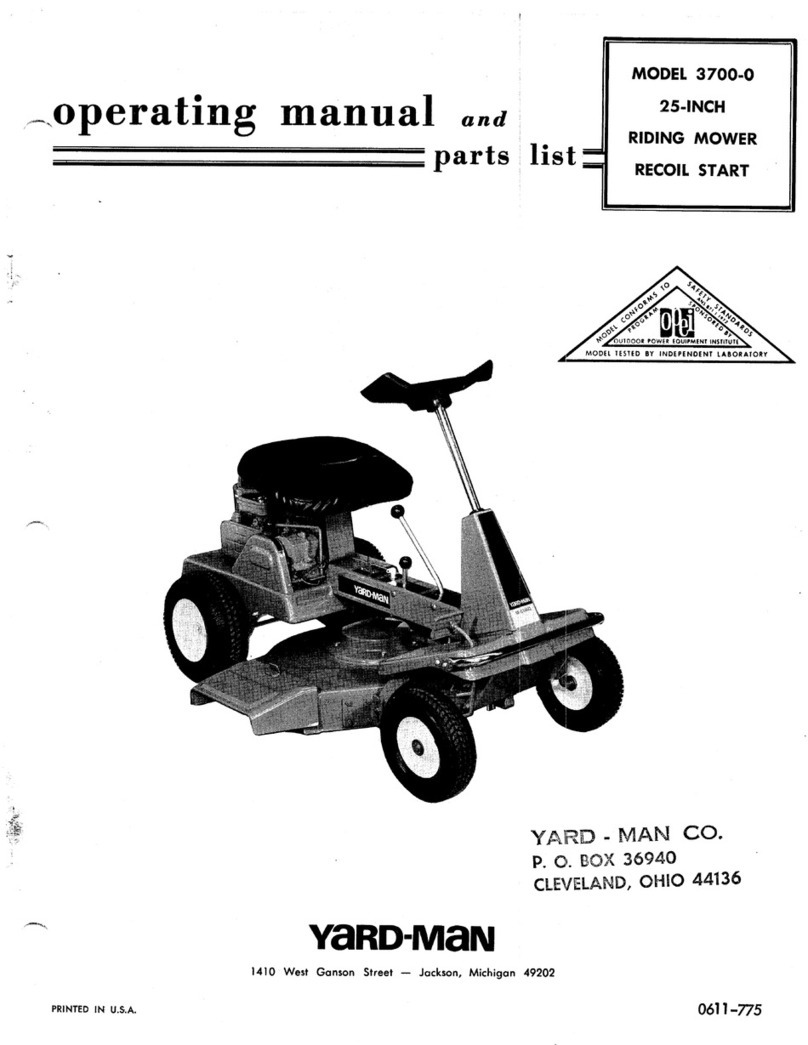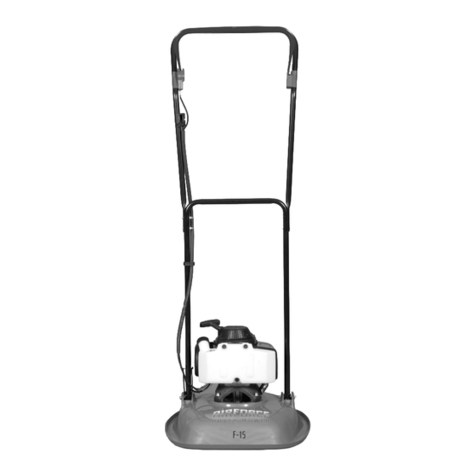
Groundsmaster 360Page 1 -- 4Safety
Maintenance and Service
1. Before servicing or making adjustments, position
cuttingdecktoallownecessaryservicetobecompleted.
Then, stop engine, set parking brake and remove key
from the switch.
2. Make sure machine is in safeoperating condition by
routinely inspecting fasteners (nuts, bolts and screws)
to make sure they are tight.
3. Never store the machine or fuel container inside
wherethereisanopenflame,suchasnearawaterheat-
er or furnace.
4. Makesureallhydrauliclineconnectorsaretight,and
all hydraulic hoses and lines are in good condition be-
fore applying pressure to the hydraulic system.
5. Keepbodyandhandsawayfrompinholeleaksinhy-
drauliclinesthatejecthighpressurehydraulicfluid.Use
cardboard or paper to find hydraulic leaks. Hydraulic
fluid escaping under pressure can penetrate skin and
cause injury. Fluid accidentally injected into the skin
mustbesurgicallyremovedwithinafewhoursbyadoc-
tor familiar with this form of injury or gangrene may re-
sult.
6. Before disconnecting or performing any work onthe
hydraulicsystem,allpressure inthesystemmust bere-
lievedby parkingthemachineon alevel surface,lower-
ing the cutting deck completely to the ground and then
stopping the engine.
7. When working on the hydraulic system and itscom-
ponents, wear eye protection.
8. Ifmajor repairsareever neededor assistanceisde-
sired, contact your Authorized Toro Distributor.
9. Use care when checking or servicing the cutting
deck. Wear gloves and use caution when servicing it.
10.To reduce potential fire hazard, keep engine and
brakeareasfreeofexcessivegrease,grass,leavesand
dirt.Clean protectivescreenon machinewhendebrisis
present.
11.Ifenginemustberunningtoperformmaintenanceor
to make an adjustment, keep hands, feet, clothing and
other parts of the body away from the cutting deck and
other moving parts. Keep bystanders away.
12.Do not overspeed the engine by changing engine
governor setting. To assure safety and accuracy, check
maximum engine speed with a tachometer.
13.Shut engine off before checking or adding oil to the
engine crankcase.
14.Disconnect battery before servicing the machine.
Disconnect negative battery cable first and positive
cablelast.Ifbatteryvoltageisrequiredfortroubleshoot-
ing or test procedures, temporarily connect the battery.
Reconnect positive battery cable first and negative
cable last.
15.Battery acidispoisonousandcan causeburns.Pre-
vent acid contact with skin, eyes and clothing. Protect
your face, eyes and clothing when working with a bat-
tery.
16.Battery gases can explode. Keep cigarettes, sparks
and flames away from the battery.
17.If welding on the machine is necessary, disconnect
thebattery cablestopreventelectricalsystemdamage.
Disconnect negative battery cable first and positive
cable last. Also, disconnect the wire harness connec-
tor(s) from the machine controller and disconnect the
terminal connector from the alternator.
18.At the time of manufacture, the machine conformed
to applicable standards. To assure optimum perfor-
mance and continued safety certification of the ma-
chine, use genuine Toro replacement parts and
accessories.Replacementpartsandaccessoriesmade
by other manufacturers may result in non-conformance
with the safety standards, and the warranty may be
voided.
19.When changing attachments, tires or performing
other service, use correct supports, hoists and jacks.
Make sure machine is parked on a solidlevel floor such
asaconcretefloor.Priortoraisingthemachine,remove
any attachments that may interfere with the safe and
proper raising of the machine. Always chock or block
wheels.Usejackstandsor appropriateload holdingde-
vicestosupporttheraisedmachine.Ifthemachineisnot
properly supported, the machine may move or fall,
whichmayresultinpersonalinjury(seeJackingInstruc-
tions in this section).
